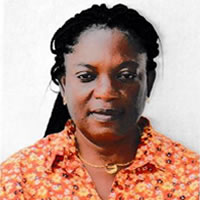Introduction
The population size and age-sex composition of the District have a broad range of consequences for a number of socio-economic indicators including the welfare of the people. The age-sex structure of a population, that is; the distribution of the population in different age-sex groups, constitutes an important subject of demographic analysis and development planning. The use of age-sex structure goes beyond demographic analysis to other important areas. Formulation and implementation of policies aimed at improving the welfare of a population are shaped by its demographic composition, i.e. by size, age and sex structure. The objective of this chapter is to analyze the size of the population with respect to composition and age-sex structure of the District.
Population Size and Distribution
Population size and distribution is useful information for planning and allocation of resources to improve on the welfare of the population. Table 2.1 presents the distribution of the population District by age, sex and type of locality. It shows that the total population of the District is 71,232, distributed as 35,225 males (49.5%) and 36,007 females (50.5%). Majority of the population reside in the rural areas (48,666) than urban areas (22,566). More than half (52.3%) of the population in the District are in the age category 0-19 years.
Sex ratio is the proportion of males to females in a given population, usually expressed as the number of males per 100 females. The sex ratio of the District is 97.8. This means that for every 98 males there 100 females. Apart from the age groups 0-4, 10-14 and 15-19 where the sex ratio is over 100 (more males than females), all the other age groups recorded a sex ratio of less than 100 (more females than males).
Age dependency ratio is the ratio of dependent population younger than 15 and 65 years older depending on the working-age population (15-64 years). The dependency ratio in the District is 93.94, indicating a high burden on the working population. The age dependency ratio is high for males (96.75) than females (91.27). In the rural areas, of the dependency ratio 95.33 percent while in the urban areas it is 91.03.
Age-Sex Structure
Population pyramid
A population pyramid is a graphical illustration that shows the distribution of various age groups in a population. It is also the graphical representation of age and sex data.
Majority of the population is concentrated at the base of the figure, for both the male and female population, thus, from ages 0-4 to ages 50-54. The bars decline in length as the population advances in age. Generally, the broad-based nature of the pyramid is an indication of a youthful population.
Fertility, Mortality and Migration,
The change (increase or decrease) in the population size is determined by fertility, mortality and migration and these are the three factors of demographic change. This section discusses the effect of these variables on the population of Sekyere Central District.
Fertility rate, general fertility rate and crude birth rate
Fertility refers to the number of live births women have, whiles the General Fertility Rate (GFR) is the number of live births in a given year divided by the mid-year population of women in the age groups 15-49. It is expressed per 1,000 women of ages 15-49 in a given year.
The Total Fertility Rate (TFR) is the average number of live-births among 1,000 women exposed throughout their childbearing years (15-49 years) to the schedule of a given set of age specific fertility rates. In other words, it is the average number of children a woman will have given birth to by the end of her reproductive years if the current fertility rates prevailed.
The crude birth rate is the number of births per 1,000 populations per year. It may be measured as the number of births in a given population during a given time period (such as a calendar year), divided by the total population and multiplied by 1,000.
From Table 2.2, the total number of women aged 15-49 years (reproductive age) is 15,961 representing 22.4 percent of the entire district’s population (71,232). The number of live births to every woman aged 15-49 years in the last 12 months preceeding the census night is 1,884 and the reported TFR is 4. This implies that a woman in the District would have an average of 4 children in her lifetime. The District recorded a general fertility rate of 118 per 1,000 women aged 15-49 years and The CBR for the District is 26.4 births per 1000 population.
Child ever born and children surviving
Table 2.3 depicts the total number of children ever born alive and children surviving for females 12 years and older in the Districts. The total numbers of females aged 12 years and older is 24,035 and have given birth to 74,455 children. The number of male (37,338) children ever born is more than females (37,117). The mean children ever born to women aged 12 years and older is 3.1 percent. The distribution of age specific mean children ever increased with age of women. The lowest mean children ever born is 0.0 per among women aged 12-14 and get to the peak of 6.6 among women aged 60 years and older.
Table 2.3 also indicates that the number of children surviving is 62,851 comprising 31,335 males and 31,516 females. The mean children surviving is 3.6. The highest mean children surviving is among the age group 55-59 years.
Birthplace by Migration
This section provides information on the duration of residence of migrants. These data give information on the timing of the last movements of migrants or the recent migration history of the District.
The table shows that the total number of migrants in the Sekyere Central District in 2010 is 20,706. A total of 7,726 were born elsewhere in the same region The Brong Ahafo (1,300), Northern (4,948), Upper East (2,770) and Upper West (1,920) regions are the main origins of migrants in the District. The proximity of the District attract migrant from these regions. The least in-migrant areas are Central (199), Volta (238) and Greater Accra regions which recorded, and 354 persons respectively.
A higher proportion of the migrants have stayed in the District for 1-4 years (28.9%) and 10-19 years (21.9%) while only 13.5 percent have stayed less than a year. Among the migrants from the Brong Ahafo Region, 35 percent have stayed in the District for a period between 1-4 years, with 12.8 percent of them staying in the district for over twenty years. Migrants from the Northern region have stayed in the District between 1-4 years are 26.1 percent. Three quarters of migrants from the Western, Central, Greater Accra, Volta and Eastern have stayed in the District for a period of twenty years or more. Majority of the migrants born outside Ghana have stayed in the District for 1-4 years (28.5%) and 10-19 years (28.5%).
Mortality
Among the components of population change, mortality plays an important role in determining the growth of a population. Mortality data are needed, among others to analyze population growth; develop, implement and evaluate public health programmes and projects; and formulate policies and action programmes of the District health Directorate. Table 2.5 presents information on the total population, total household deaths and crude death rates for Districts in the Ashanti region. The household deaths in the District are 545 and it represents 0.8 percent of the total household population (70,574). The crude death rate is 7.65 per 1,000 population.
Age Specific Death Rate
The results, presented in Figure 2.2 shows that the death rates among females are higher than those of males among the age groups 10-49 years, a possible indication of relatively high maternal mortality in the District.
The age-specific death rates for females are lower than that for males from ages 50 years and older. The patterns are slightly higher for female in the childbearing age range (15-49 years). In the age groups 50-54 years and above, females tend to have lower age-specific death rates than males of the same age in the District.
Date Created : 11/25/2017 4:49:28 AM




